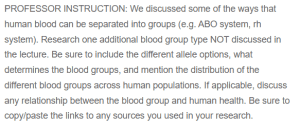Exploring the Kell Blood Group System: Alleles, Determinants, and Global Distribution
Allele Options and Determinants
The Kell blood group system is defined by a series of antigens present on the surface of red blood cells, specifically encoded by the KEL gene located on chromosome 7 (Davison et al., 2020). This system includes several antigens, but the most clinically significant are the K (Kell) and k (Cellano) antigens. The K antigen is a single amino acid substitution in the KEL protein, which is dominant over the k antigen. Therefore, the genotypes in this system are:
- KK: Individuals express the K antigen and are considered Kell-positive.
- Kk: Individuals express both the K and k antigens, also classified as Kell positive.
- kk: Individuals express only the k antigen and are considered Kell negative.
Distribution Across Populations
The distribution of Kell antigens varies:
- K antigen: Found in about 9% of Caucasians; rarer in African and Asian populations.
- k antigen, present in over 90% of individuals worldwide, making it the most common phenotype.
Relationship with Human Health
The Kell system has significant implications for blood transfusion and pregnancy. Anti-K antibodies can cause severe hemolytic transfusion reactions if K-positive blood is given to a K-negative person. These antibodies can also cause hemolytic disease in the fetus and newborn (HDFN). A K-negative mother can produce anti-K antibodies that attack the red blood cells of a K-positive fetus, leading to anemia or severe outcomes. Routine screening for Kell antibodies during pregnancy is crucial to prevent complications (Luken et al., 2021).
Summary
Kell blood group system is defined by the presence of K and k antigens, determined by the KEL gene. Kell system is clinically important due to its implications in blood transfusions and hemolytic disease of the fetus and newborn, highlighting the need for careful management in medical practice.
References
Davison, G. M., Hendrickse, H. L., & Matsha, T. E. (2020). Do Blood Group Antigens and the Red Cell Membrane Influence Human Immunodeficiency Virus Infection? Cells, 9(4), 845. https://doi.org/10.3390/cells9040845
Luken, J. S., Folman, C. C., Lukens, M. V., Meekers, J. H., Ligthart, P. C., Schonewille, H., Zwaginga, J. J., Janssen, M. P., Schoot, C. E., Bom, J. G., & Haas, M. (2021). Reduction of anti‐K‐mediated hemolytic disease of newborns after the introduction of a matched transfusion policy: A nation‐wide policy change evaluation study in the Netherlands. Transfusion, 61(3), 713–721. https://doi.org/10.1111/trf.16276
ORDER A PLAGIARISM-FREE PAPER HERE
We’ll write everything from scratch
Question
DISCUSSION BOARD #2 BLOOD TYPES
PROFESSOR INSTRUCTION: We discussed some of the ways that human blood can be separated into groups (e.g. ABO system, rh system). Research one additional blood group type NOT discussed in the lecture.

Exploring the Kell Blood Group System- Alleles, Determinants, and Global Distribution
Be sure to include the different allele options, what determines the blood groups, and mention the distribution of the different blood groups across human populations. If applicable, discuss any relationship between the blood group and human health. Be sure to copy/paste the links to any sources you used in your research.

